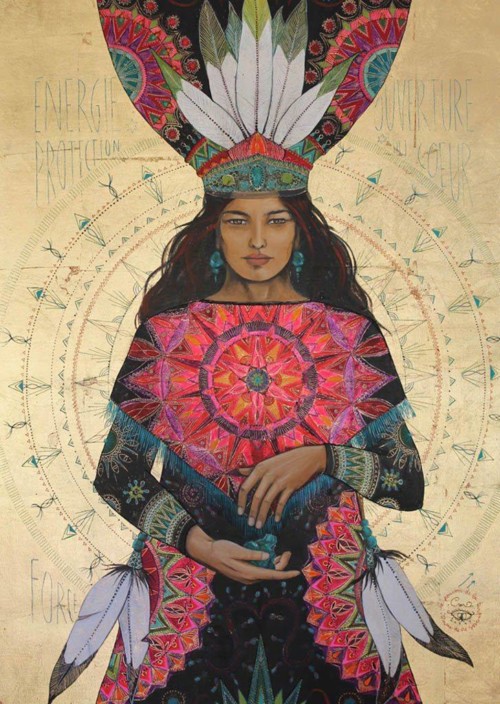
As we yearn for a larger explanation of what’s happening in the world today, many turn attention to the spiritual, esoteric teachings of ancient cultures—teachings that have been recorded by both priesthoods and mystics. These systems were ways of symbolizing and preserving universal experience so it could be duplicated for those to come, and to hide knowledge from those who might misuse it for personal gain. In times past, it was mainly those few in spiritual service who received the knowledge and discipline necessary to train their minds to experience “enlightenment.”
Today, though, everyone is involved in a global process of spiritual growth—no more is enlightenment the realm of a special few. Esoteric teachings can serve as established roads into understanding the large-scale transformation happening today, but often they don’t go far enough or communicate how the phases of the process actually “feel” or how the teachings may have evolved to fit with our accelerated reality.
The Many Paths
Since people have varying levels of readiness and many cultural biases, there are many paths to the same goal. The Universal has been fragmented the way the Tower of Babel fragmented knowledge into so many languages. Throughout history many souls have incarnated to create and re-create ascension ceremonies and practices, suited to specific cultures and time periods, to help people remember who they are and what they know. Sometimes the methods were updated for the times, and sometimes the teachings remained dogmatic—ie, the teachers were loyal to past codified forms of the knowledge and processes.
Back when an individual’s world was limited to their village or country, one narrow path was fine. But today we are becoming global citizens, looking for commonalities among peoples. There are core truths at the heart of all paths to spirit. Should we let our definition-loving left brain limit us to only one way? Should we allow ourselves to become captive of a form?
The Limits of Ancient Teachings
In many ancient practices the teachings originated with partial perception. People were seeing in a linear way where there appeared to be a separation between earth and heaven, humans and the gods. Heaven was way “up there” and there seemed to be a huge gap between the realms. Various methodologies were defined so people could cross that gap—Charon, the sacred ferryman, carried souls of the newly deceased across the river Styx. Some souls were taken up in the chariots of the gods, while others had elaborate burial rituals to ensure they would make it to Valhalla or Olympus with all their worldly possessions.
Back then, we needed heaven to seem like earth, to believe there was “something” rather than “nothing” out there; we needed physical proof. We needed the gods to be like us, rather than we like them. We gave them powers we didn’t grant ourselves. Visitations were needed to convince the left brain that heaven was real. Similarly, we needed physical representations of abstract sacred patterns, or frequencies of consciousness, to feel the reality of how the nonphysical realms functioned. We sought to replicate sacred geometries in our temples, churches, cities, and arts. But for the large part, we didn’t go into the direct experience of the abstract, nonphysical realms.
We are still coming from partial perception today, still seeing a gap between self and soul, between matter and spirit—because we’re still knowing through the filter of linear perception. It’s logical, then, that many of the old teachings are appealing. But we are experiencing an intensified acceleration of energy and consciousness that’s causing our physical reality to increase its frequency; we are now able to experience that the nonphysical spiritual realm is within the physical one. They are one! As we flow with the acceleration on the planet and experience greater integration of soul with self, spirit with matter, our identity and reality transform. We are actually transforming faster and in larger collectives than ever before on the planet. Ancient teachings don’t address this.
Copyright by Penney Peirce
